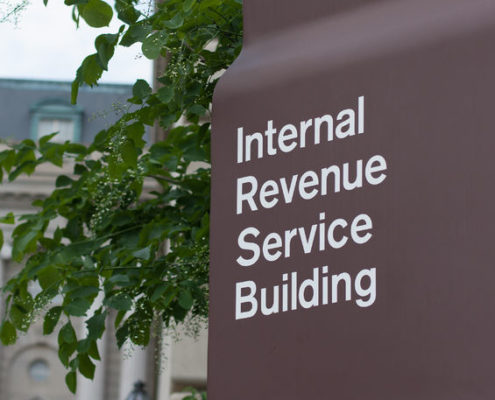After many years, I decided to watch Tin Men again. It is a 1987 movie starring Danny DeVito and Richard Dreyfuss, both of whom are aluminum siding salesman in Baltimore in the late sixties. They run multiple scams, including “Life Magazine” and “This Job is Free,” as a means of ripping off unsuspecting homeowners. In the end, the Home Improvement Commission revokes each actor’s license to sell aluminum siding.
Just as with aluminum siding, Offers in Compromise (“OIC’s”) have been used to scam unsuspecting individuals out of their hard earned money. Many Tax Resolution Companies (“TRC’s”) use aggressive sales and deceptive trade practices to convince taxpayers into parting with their hard earned money. TRC’s have recently drawn the attention of the Internal Revenue Service and are now included in the IRS “Dirty Dozen” scams.
These TRC’s use radio and television advertisements as well as print media to reach customers. The Companies routinely promise taxpayers that their tax woes can go away for pennies on the dollar. To reinforce this claim TRC’s often cite prior success stories with such claims as: “We resolved a $342,000 federal tax debt for $750.00 for one of our client’s.” In addition, the slick advertisements often claim that the TRC has attorneys, CPA’s and enrolled agents on its staff. More often than not, these claims are grossly exaggerated, and in some cases, outright lies.
The TRC’s often use sales people, many of whom never completed a 1040 in their life, much less an OIC. The sales associate is provided with a script and sales pitch. The initial call generally culminates in the sales associate telling the prospective client that their debt can be settled for pennies on the dollar. In cases where the prospective client demonstrates a reluctance to move forward a TRC will sometimes bring in a “closer.”
Following the sale pitch, the unsuspecting consumer is asked to sign an engagement letter and pony up either the entire fee or a large deposit with a commitment to pay the balance at some future date. As an inducement, some TRC’s will even offer monthly payment plans requiring either a credit card or ACH authorizations.
The foregoing all takes place without any financial analysis having taking place, without regard to the remaining time on the statute of limitation for collections, and without regard to the taxpayer’s prior history, if any, with the IRS.
The above practices create false hope and unrealistic expectations on the part of those who take the bait. While some TLC’s are ethical and provide an honest assessment of the Taxpayer’s chances for success for acceptance of an OIC, many do not.
The typical follow up by the TRC will include securing transcripts on behalf of the client and then barraging the client with document requests and questions. After receiving the information from the client, the client is then informed that they no do not qualify for an OIC or in that they have failed to comply with the terms of the engagement letter. In more egregious cases, the TRC simply does nothing and keeps the client’s money.
In either case, the client has not only lost whatever money he or she paid the TRC, but is also still saddled with the tax debt.
An understanding of the mechanics and the rules related to an OIC is necessary before considering an OIC.
Currently, there are three types of Offers in Compromise including Doubt as to Collectability (“DATC”), Doubt as to Liability (“DATL”) and Effective Tax Administration (“ETA”). The discussion below is limited to DATC cases, since DATC OIC’s represent the overwhelming majority of cases submitted. The other two are taken up in separate blog posts.
An OIC based upon DATC occurs when a taxpayer does not have the financial ability to pay the full amount of the tax liability. In these cases, the taxpayer’s assets and income are insufficient to liquidate than the full amount of the liability.
The OIC procedures permit a taxpayer to settle his or her unpaid taxes for an amount which is less than the face amount of the tax, penalties and interest. This form of settlement should be distinguished from an installment agreement, which requires the taxpayer to pay the full amount owed in installments over a time period or a partial pay installment agreement, both of which are discussed in separate blog posts.
OIC’s have been in existence since 1992 and are authorized under 26 U.S.C. § 7122 (a). However, it has been reported that the acceptance rates for OIC’s has declined since 2014 and is now estimated at somewhere between thirty and thirty five percent (See National Taxpayer Advocate, Erin M. Collins, “2022 Annual Report to Congress.” At Figure 1.2.6 “Offers in Compromise, Installment Agreements, and the Que, FY’s 2019-2022 (2023).
The IRS Policy on Offers in Compromise, which was approved on January 30, 1992 and is memorialized in its Policy Statement states in relevant part:
“The Service will accept an offer in compromise when it is unlikely that the tax liability can be collected in full and the amount offered reasonably reflects collection potential. An offer in compromise is a legitimate alternative to declaring a case currently not collectible or to a protracted installment agreement. The goal is to achieve collection of what is potentially collectible at the earliest possible time and at the least cost to the Government” (See I.R.S. Policy Statement P-5-100).
The Policy Statement, however, makes clear that Offers in Compromise will be carefully scrutinized:
“The success of the compromise program will be assured only if taxpayers make adequate compromise proposals consistent with their ability to pay and the Service makes prompt and reasonable decisions. Taxpayers are expected to provide reasonable documentation to verify their ability to pay. The ultimate goal is a compromise which is in the best interest of both the taxpayer and the Service. Acceptance of an adequate offer will also result in creating for the taxpayer an expectation of and a fresh start toward compliance with all future filing and payment requirements.”
Treas. Reg. Section 301.7122-1(c)(1) provides that the IRS is tasked with determining whether the taxpayer has the ability to pay. The Regulations further provide that in DATC cases the IRS will permit the taxpayer to retain “sufficient funds to pay basic living expenses” Treas. Reg. Section 301.7122-1(c)(2).
The IRS decision to accept or reject a DATC OIC is based upon the concept of reasonable collection potential (“RCP”). The Internal Revenue Manual Section 5.8.5.1.6 defines RCP as “the amount that can be collected from all available means, including administrative and judicial collection remedies.”
In calculating the RCP the IRS will consider:
- The amount collectible from the taxpayer’s net realizable equity in his or her assets. (quick sale value of the taxpayer’s asset less any liens that are senior to the IRS);
- The taxpayer’s expected future income after taking into account necessary living expenses;
- The amount collectible from any third party; and
- The taxpayer’s income or assets that are available to the taxpayer but beyond the reach of the IRS.
Additionally, the taxpayer’s history with the IRS may have an impact on his or her chances for success. In particular, the IRS may consider an OIC from a habitually delinquent taxpayer as a dilatory tactic or an attempt to impede or defeat any collection efforts on the part of the IRS.
In consideration of the Government accepting less than the face amount of tax, penalties and interest, the taxpayers must file his or her tax returns and also must remain compliant with the U.S. Tax Laws for five years following the acceptance of the OIC.
There are occasions where special circumstances exist when submitting a DATC OIC, which justify a deviation from the strict OIC rules. In these instances, the Taxpayer cannot fully satisfy the tax liability even though assets exist, which, if liquidated, could satisfy the debt in its entirety. These special circumstances include, but are not limited to, the liquidation of a pension by an elderly taxpayer, which would impair his or her ability to meet monthly living expenses or the sale of a home which would require the taxpayer to rent a dwelling.
The foregoing circumstances may also be used to submit an ETA OIC on the basis of economic hardship. The taxpayer bears the burden when submitting an ETA OIC of demonstrating compelling circumstances exist, that accepting the ATA OIC does not undermine public confidence and that acceptance of the offer is justified even though it would represent a divergence in the policy applied to similarly situated taxpayers.
In situations, where an OIC is not an option, there are other alternatives a taxpayer can consider including an installment agreement, partial pay installment agreement or being placed in uncollectible status.
A decision to submit an OIC should only be made after careful consideration and evaluation of all the facts. Any such decision should also include the advice of a competent and experienced tax advisor and complete financial and personal inventory. When considering an OIC it is best to use the services of a tax attorney. While there are reputable TRC’s out there, you are taking a chance that the $2,500 or $3,500 you spend with a TRC will be money wasted.
When assessing your potential for acceptance of an OIC, it is important to carefully review your particular situation, since each case is fact sensitive. Failure to properly evaluate your current and future financial situation will almost always result in an OIC being rejected. Additional factors that need to be considered are your age and health, your employment and marital status, the existence of other secured and unsecured creditors, your current and future earning potential as well as the remaining time under the statute of limitations for collection of the outstanding taxes.
From the many horror stories I have heard and read about, many TRC’s do not undertake the proper analysis prior to signing up a taxpayer. They are simply doing “Life Magazine.”

 Tax cases fall into two categories:
Tax cases fall into two categories:  Many business owners believe that operating as a Corporation protects them from personal liability.
Many business owners believe that operating as a Corporation protects them from personal liability.
